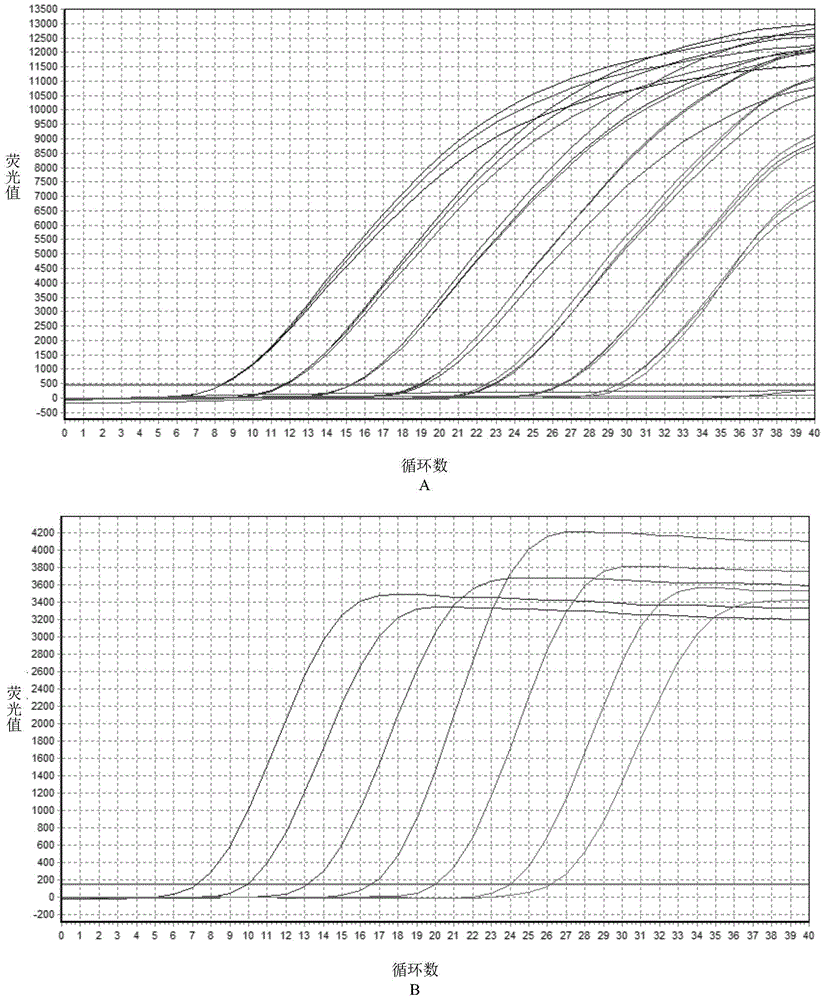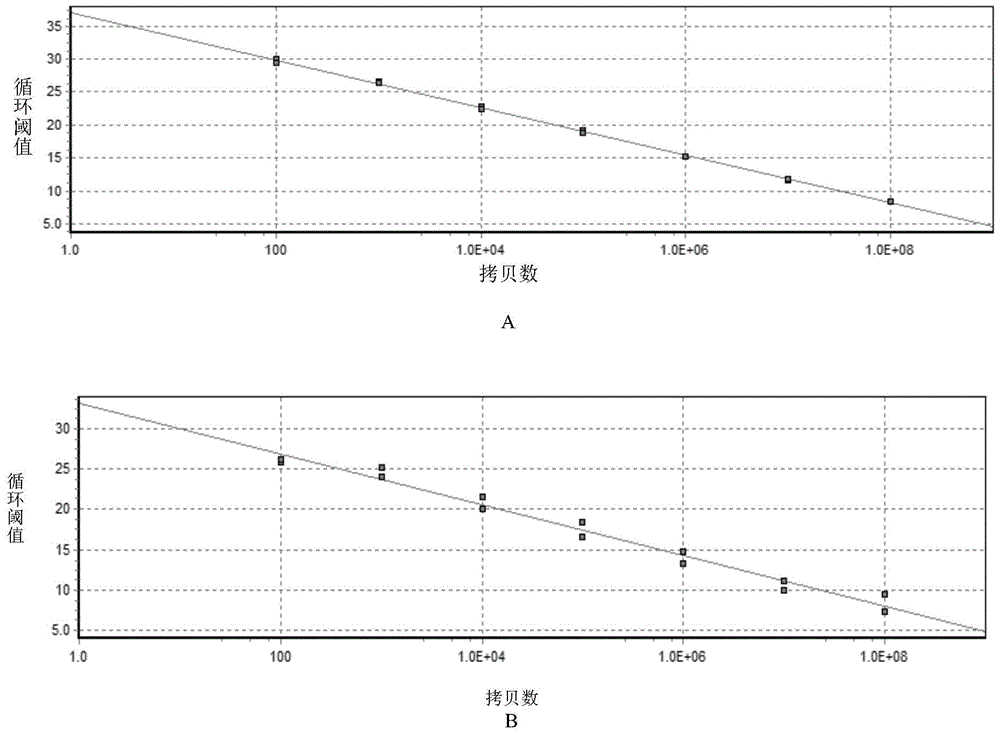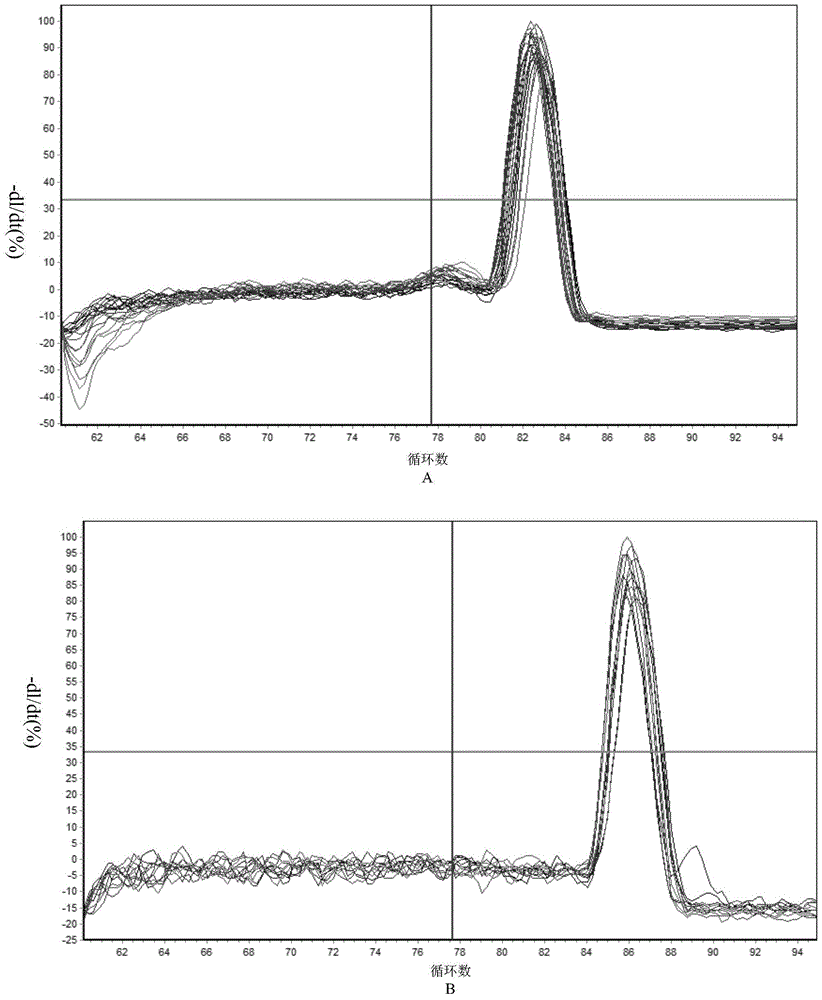Fluorescence quantitative pcr detection method of a kind of duck tlr3 gene
A fluorescence quantitative and detection method technology, applied in the field of life sciences, to achieve the effects of reduced selectivity, small inhibitory effect, and wide linear range
- Summary
- Abstract
- Description
- Claims
- Application Information
AI Technical Summary
Problems solved by technology
Method used
Image
Examples
Embodiment Construction
[0055] The present invention will be described in detail below in conjunction with specific embodiments. The following examples will help those skilled in the art to further understand the present invention, but do not limit the present invention in any form. It should be noted that those skilled in the art can make several modifications and improvements without departing from the concept of the present invention. These all belong to the protection scope of the present invention.
[0056] 1 Materials and methods
[0057] 1.1 Strains and main reagents
[0058] Escherichia coli Trans5α competent cells were purchased, and the pEASY-T5-zero vector was purchased from Beijing Quanshijin Biotechnology Co., Ltd.; qPCR Master Mix, Trizol reagent, and reverse transcriptase M-MLV were purchased from Promega. Fluorescent quantitative PCR tubes were purchased from Ai Sijin Biotechnology (Hangzhou) Co., Ltd. The gel recovery kit was purchased from Kangwei Century Biotechnology Co., Lt...
PUM
 Login to View More
Login to View More Abstract
Description
Claims
Application Information
 Login to View More
Login to View More - R&D
- Intellectual Property
- Life Sciences
- Materials
- Tech Scout
- Unparalleled Data Quality
- Higher Quality Content
- 60% Fewer Hallucinations
Browse by: Latest US Patents, China's latest patents, Technical Efficacy Thesaurus, Application Domain, Technology Topic, Popular Technical Reports.
© 2025 PatSnap. All rights reserved.Legal|Privacy policy|Modern Slavery Act Transparency Statement|Sitemap|About US| Contact US: help@patsnap.com



